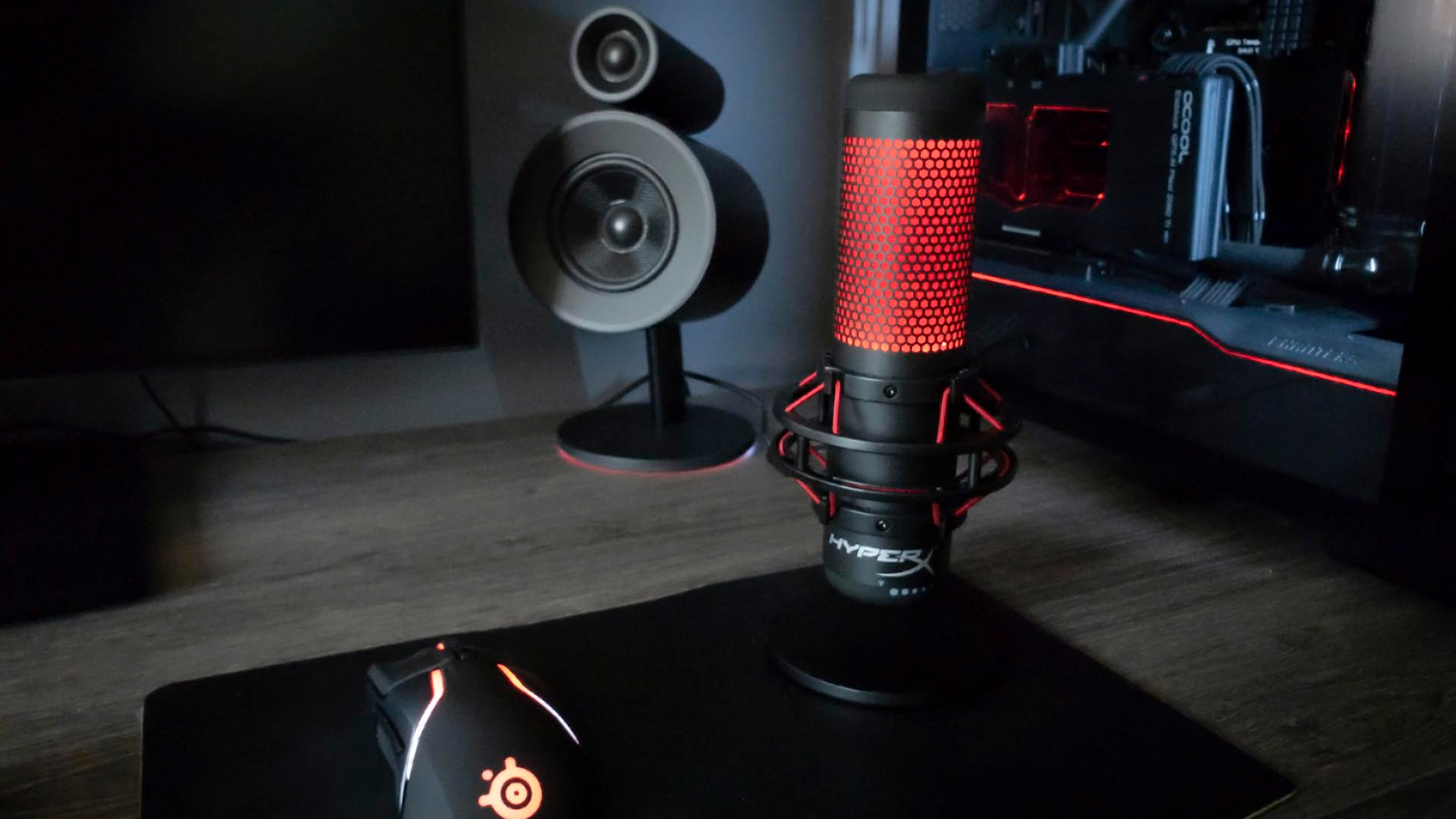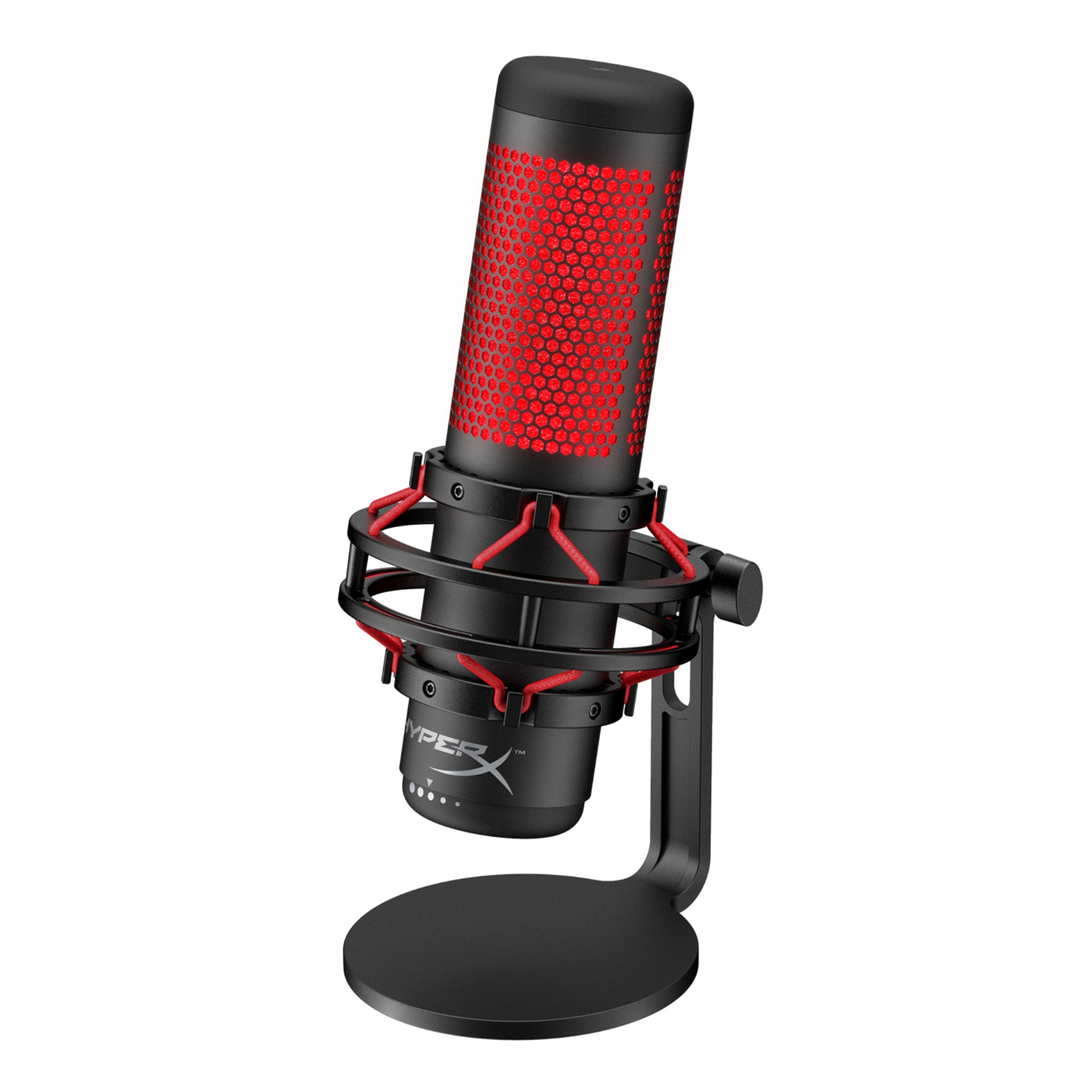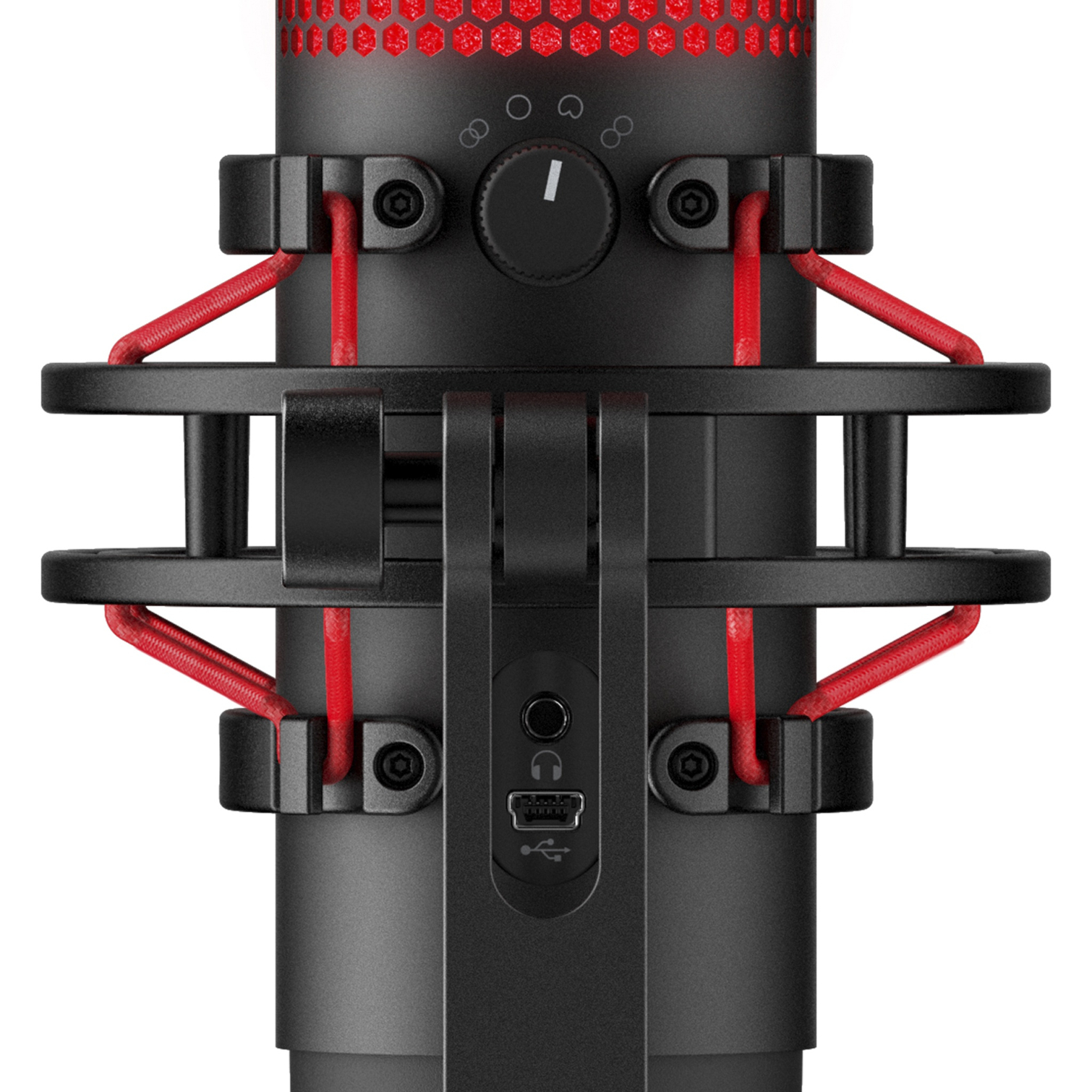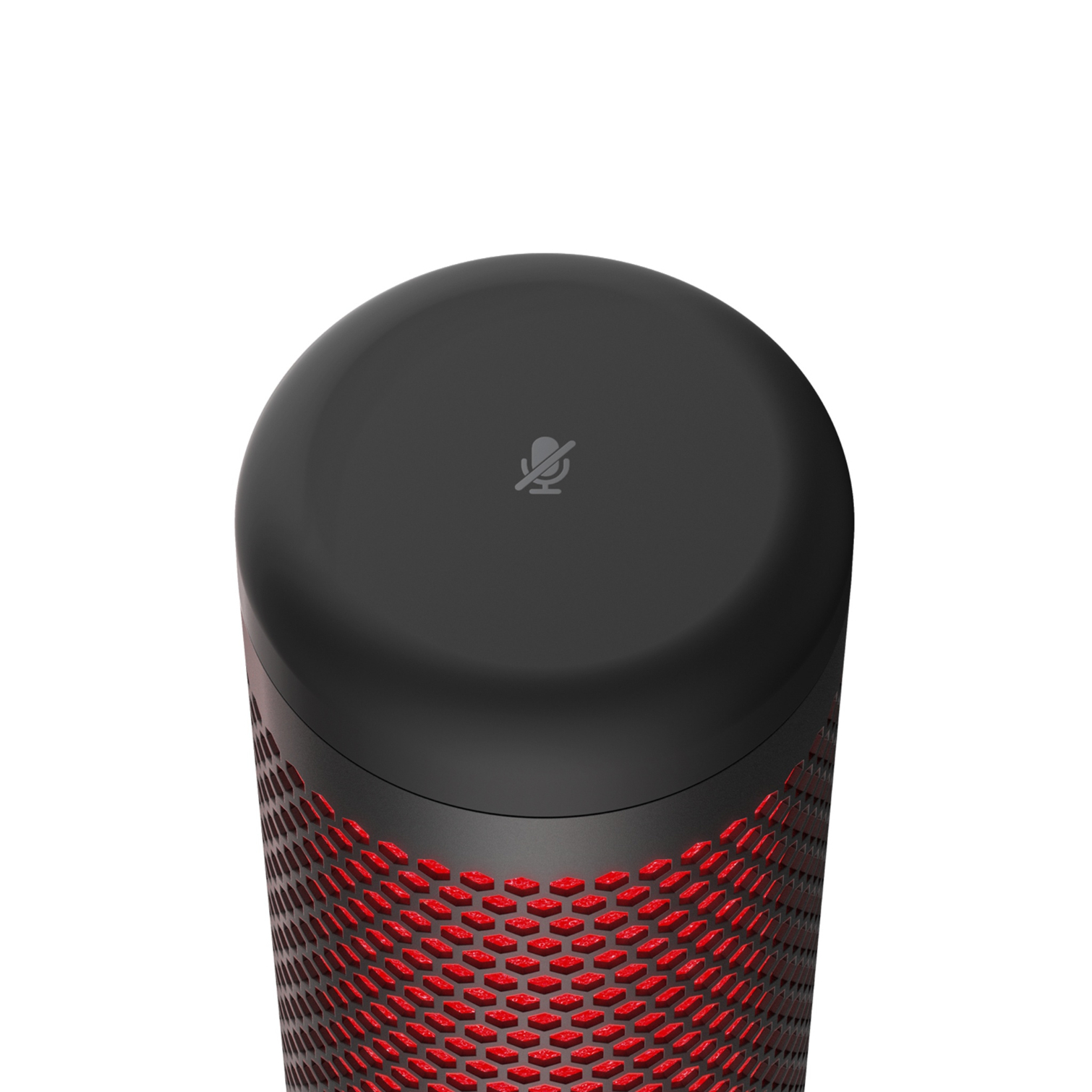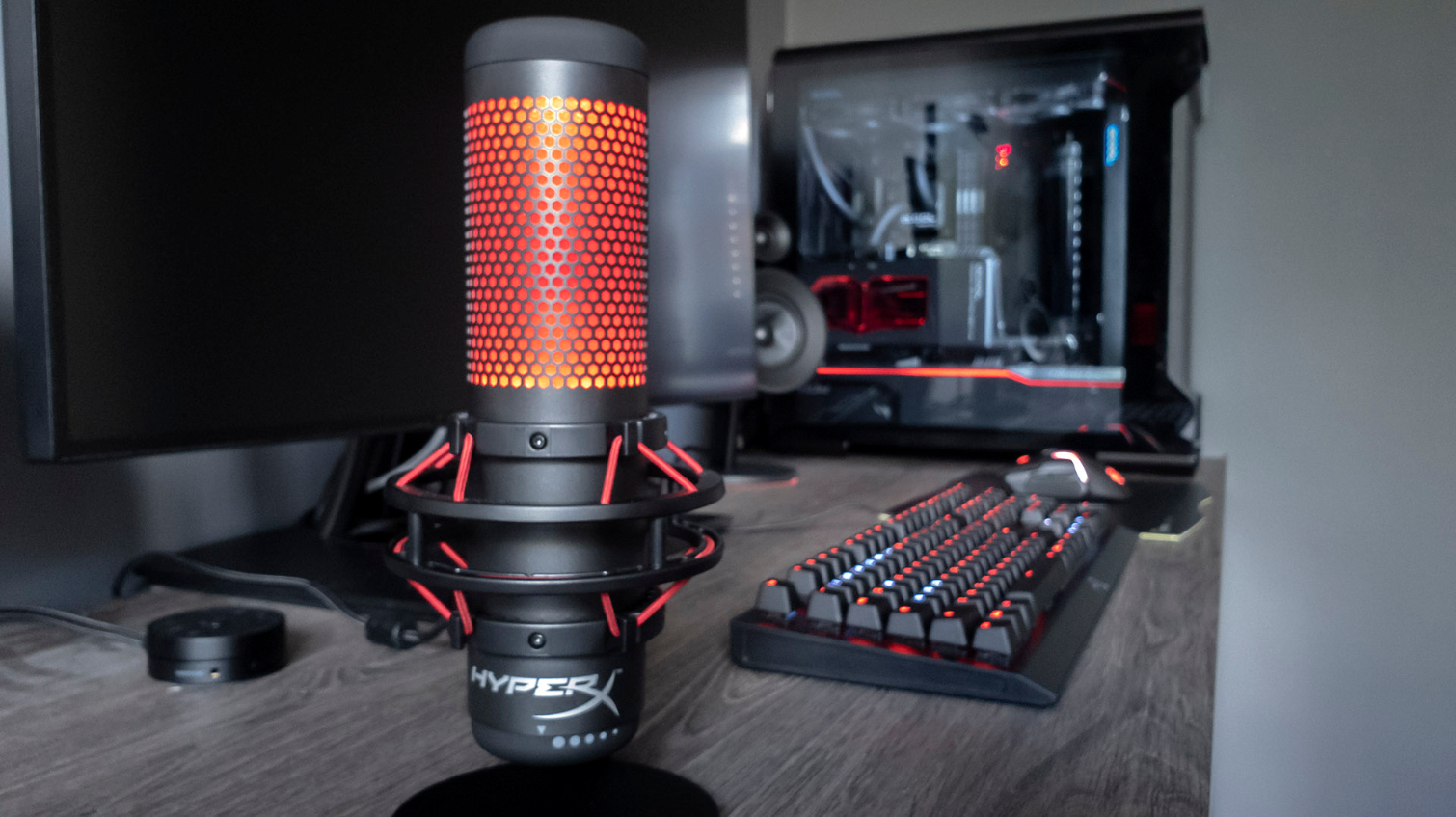Tom's Hardware Verdict
Kingston's unusual design incorporating three diaphragms produces great sound at a low price. The Quadcast's controls are also intuitive for any gamer or game streamer.
Pros
- +
Easy controls
- +
Four polar patterns
- +
Great clarity
- +
Shockmount and adapter for boom stands
Cons
- -
USB interface limits audio to 48KHz / 16-bit
- -
May lead to a mega-expensive headphone purchase
Why you can trust Tom's Hardware
Gaming microphones might have seemed like an unnecessary decadence just a few years ago, but with the advent of Twitch comes a totally different mindset about PC gaming. No longer purely a performance equation, the ideal gaming setup is as much about broadcasting high-quality audio and video--and looking good doing it--as it is about frame rates.
That's important context around which to frame the arrival of Kingston's HyperX Quadcast, a $140/£120 dedicated mic that's earned the title as one of the best gaming microphones out now. That's thanks to Twitch-ready looks and well-placed controls that allow for quick gain changes and muting while you play.
Design
In reality, a mic like the HyperX Quadcast isn't exactly a transformative experience in multiplayer gaming versus a headset with a swingarm mic--except perhaps for your buddies who might have grown weary of your tinny voice. Instead, it's a broader proposition, for those interested in streaming while they play, or in multimedia creation like YouTube content or podcasts.
Going for a dedicated mic also opens up new possibilities for your headphone setup. Since you’d no longer require a built-in mic on your cans, the audiophile space beckons for those with pockets deep enough to pay the entry fee. Top-quality gaming headsets are genuinely wonderful today, but they can’t compete with a pair of high-end headphones running into an amp. In other words, in that time-honored PC-gaming tradition, opting for a dedicated mic like this is a great excuse to spend more money on better-sounding headphones.
The numbers on the HyperX Quadcast's spec sheet might not jump out at you. In part that might be because microphone spec sheets aren't generally scrutinized in the PC gaming enthusiast space, but nonetheless this is a mic designed specifically for up-close vocal recording and background noise cancellation, and the Quadcast executes on that mission brilliantly.
The mic’s built around an electret condenser design, which is broadly the same as the mic on the end of most headset swingarms: A diaphragm translates changes in sound pressure levels into electrical current using a backplate, which holds static charge, and an amplifier. There’s an electrical field between the diaphragm and backplate because the diaphragm is conductive, so when it’s pushed back by sound pressure levels, the electrical field narrows and a louder signal is sent to the amplifier. When the sound pressure level (SPL) gets quieter, the diaphragm (or three of them in this mic's case) can move back to their normal position and the electrical field widens again, lowering the signal sent to the amplifier.
Where the Quadcast differs from those tiny headset mics is in the size and plurality of the diaphragm. Mics fitted into small devices like headsets and phones are great at articulating fast changes in SPL like explosive sounds, but they can’t accurately translate low-end frequencies into audio signal because the diaphragm isn’t physically big enough to react accurately. That's the reason (or at least one reason) every phone call you've ever had sounds so thin and scratchy. There’s no such problem with a mic this size, which takes its looks from those classic Neumann and Electrovoice studio mic designs of the past. It's able to pick up the subtler details of your low-end register and commit them to electrical signal accurately.
Get Tom's Hardware's best news and in-depth reviews, straight to your inbox.
The same’s true of other gaming microphones like Razer’s Seiren series, of course, but it’s important to mention that it’s this increase in real estate that really gives dedicated mics the ability to bump up the sound quality exponentially from what a smartphone or a headset is capable of.
Adding to the Quadcast’s studio cred, there are four polar patterns listed on the spec sheet: cardioid, bidirectional, stereo and omnidirectional. We’re not sure what Kingston means by ‘stereo’ here as that isn’t a recognized polar pattern in itself, but clearly it makes use of the Quadcast's very unusual three-diaphragm design. The results don't sound very different to the bidirectional setup to our ears, but it's another option at least.
What that array of options means in terms of usability is that in addition to picking up just one source in front of it using the cardioid setting (you, generally) it’s capable of listening to the whole room at once, or two different sound sources at different sides of the mic. The latter is especially handy for anyone looking to record a podcast as a duo, although it’s still always preferable to use two separate mics so that you’re recording two separate signals for EQing, compression and mastering.
The cardioid pattern is the one that matters, though, and it works well to bring out the subtle details of your voice without drawing in unnecessary background noise. There’s a clarity to the high end, a "breathiness" that it’s able to capture, which we found really commendable at this price point. A note for mechanical keyboard users though: The Quadcast does pick up the clicks in that cardioid setting, so it’s worth running your signal through a noise suppressor if possible. You might also get around it by isolating the frequency those clicks sound out at, running your signal through an EQ and setting a narrow q value at that frequency to kill that signal. It's not the Quadcast's fault--Cherry switches are loud, and they generally live right next to where you'd want to place a mic. Having said all that, the mechanical keyboard noise is less noticeable than when using a lot of gaming headset mics, at least.
Specifications
| Sample rate | 48KHz |
| Bit rate | 16-bit |
| Frequency response | 20Hz-20KHz |
| Condenser type | Electret |
| Polar patterns | Cardioid, Omnidirectional, Bidirectional, Stereo |
| Cable length | 3m |
| Connectivity | USB |
Audio Quality
Elsewhere on the Quadcast’s vital statistics, the stats of note are a 20Hz-20KHz frequency response range and 48Khz/16-bit sample/bit rate. We have absolutely no reservations about that frequency response given the intended purpose. You might run into trouble if you’re trying to capture whale song, but really that’s on you for bringing a gaming mic to an aquatic mammal. The full EQ frequency range of your voice, however, is going to come across beautifully and that’s somewhat more pertinent.
Regarding the sample and bit rate, 48KHz and 16-bit is CD quality audio is sufficient for most common gaming-related scenarios. But that spec really highlights that the Quadcast isn’t pro audio equipment, and can’t be used as such. Most likely that comes down to the USB interface, which is certainly more convenient than trying to find somewhere on your PC to plug in an XLR jack. So the trade off of convenience makes sense for a gaming product.
Accessories and Compatibility
There are two physical placement options on offer here, and they’re both great. The first is the shock mount and desktop stand supplied with the mic, which keeps it suspended above the surface it’s placed on. This is a big deal for streamers, since bumping into your desk or getting in the way of a clumsy hand is bound to happen while you’re recording at some point. Ordinarily those bumps and bangs are picked up by the mic through its stand. This design minimizes that annoyance, while remaining sturdy enough to stay put.
Secondly, there’s an adapter supplied in the box which allows the mic to be fitted to a boom arm. Going that route would be effective at minimizing keyboard clatter, too. It also demonstrates an awareness on Kingston’s part of how streamers actually like to play--more often than not with a boom stand off to one side rather than a central desk mic stand.
We also love the way the Quadcast's mute and volume controls are implemented, using a simple push button at the very top for muting, and by rotating the body at the bottom to change volume. We're not pro gamers or Bop-It experts here, but even we can handle that while we play.
It's become a fact of life that the mic mute button is placed somewhere obtuse on gaming headsets and that you have to break stride to find and operate it, so tapping the top of the Quadcast to mute feels liberating. There's no clicking or popping audible when muting, and a handy, unmissable red light comes on to indicate when you're going silent.
You shouldn't generally need to adjust the volume on the fly, since there's always a danger of running your signal so high it starts peaking. However, should you need to make quick adjustments it's a very easy task when the mic's fitted to its desk stand. Twisting the bottom is a bit trickier when using a boom arm, though.
Bottom Line
There's nothing really to dislike about this mic, so long as you're using it for its intended purpose. The nearest we can come to it is in its limitations as a studio device. If it had an XLR input, the Quadcast could take on high-fidelity recording tasks, but we understand that most gamers won't want the hassle of interfacing with XLR.
The bottom line is that this is just about the best gaming mic we've heard. There's very little in it, but while the mighty Blue Yeti might convey more warmth, the Quadcast has a high-end clarity that makes voices cut through game audio with a really polished sound. Razer's Seiren X isn't far behind either but for now, consider Kingston's HyperX Quadcast your go-to dedicated gaming mic.
Image Credits: Tom's Hardware
MORE: All Peripheral Content
MORE: All Gaming Content
